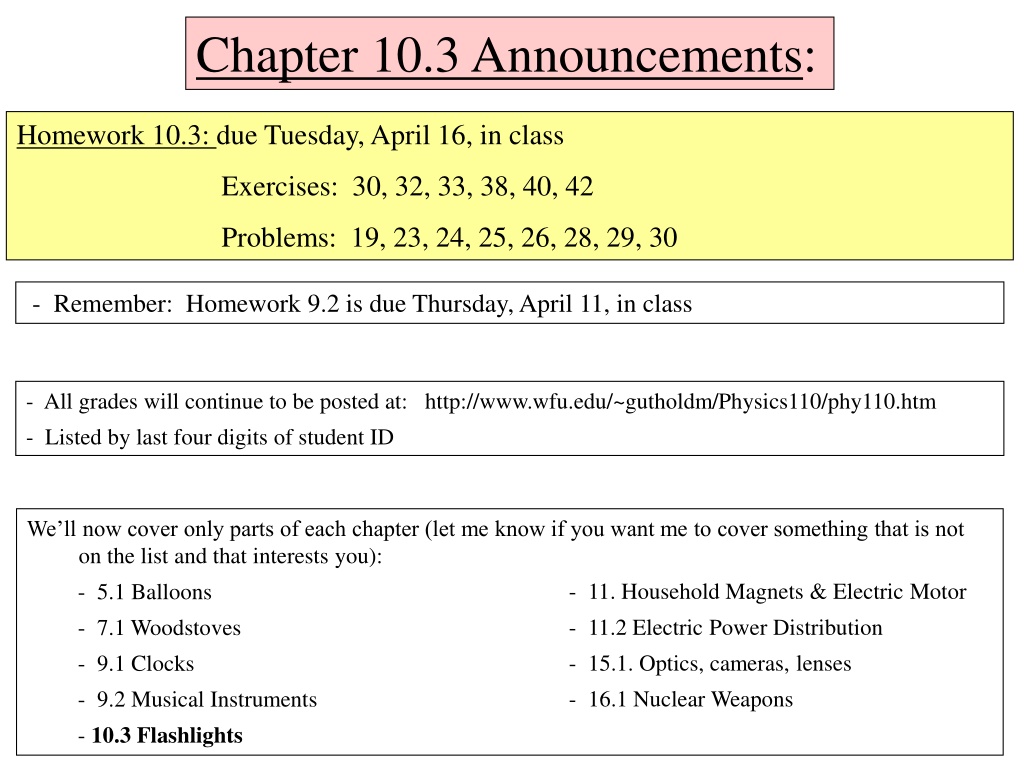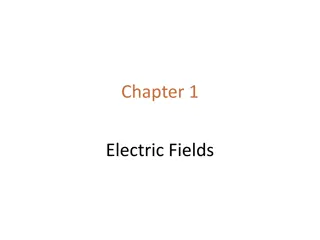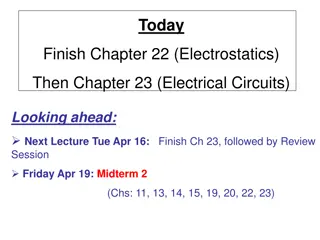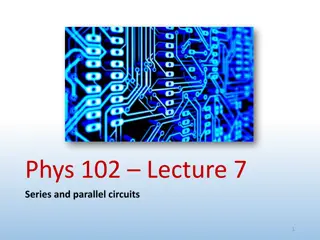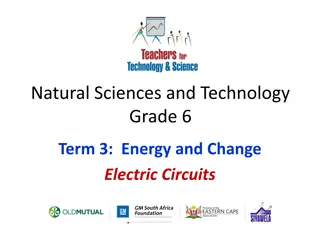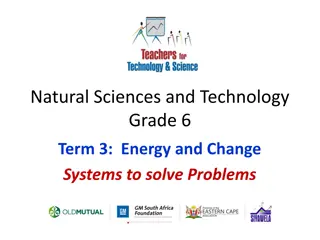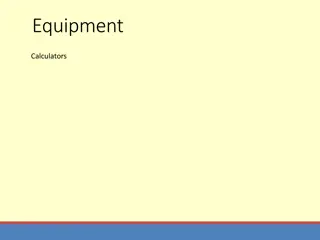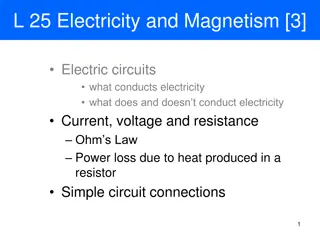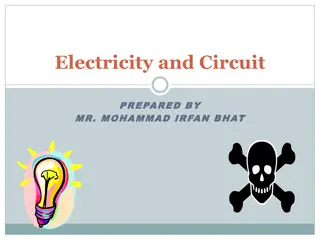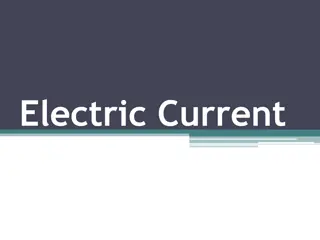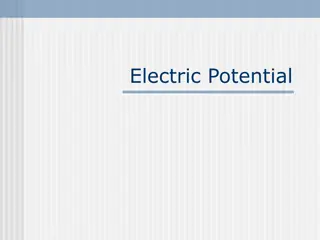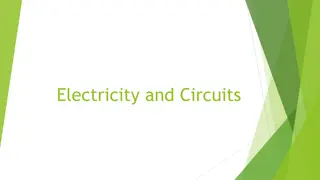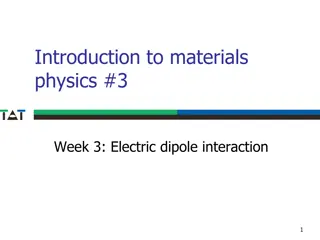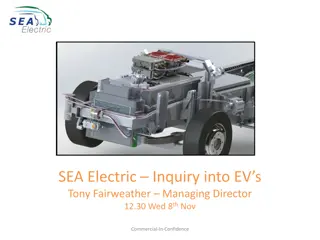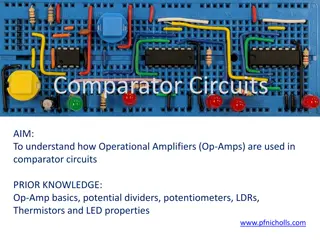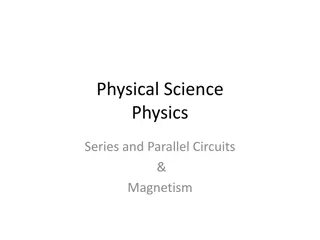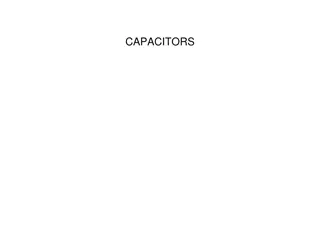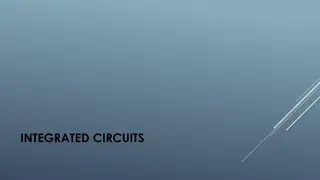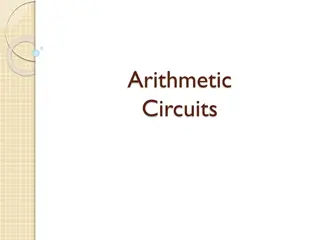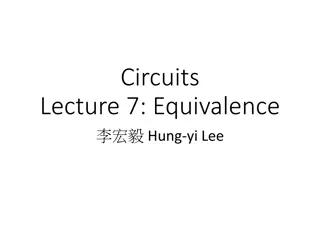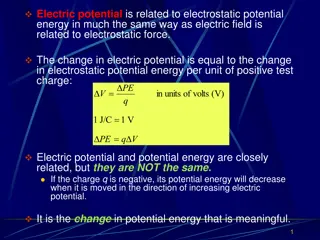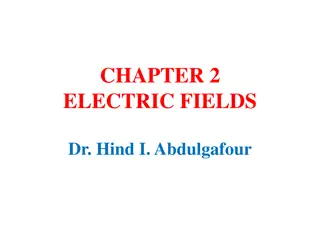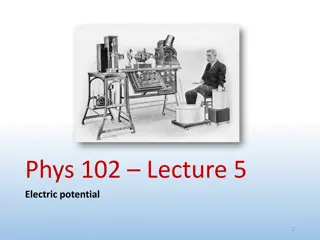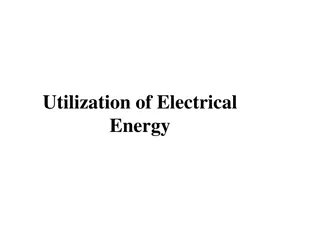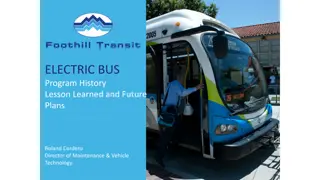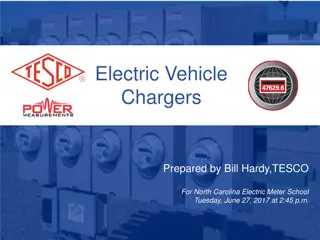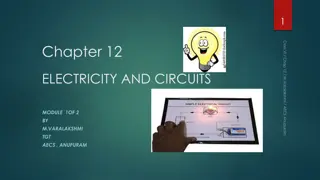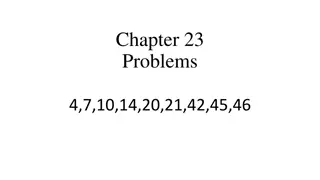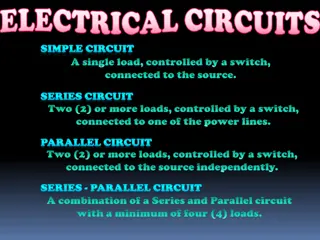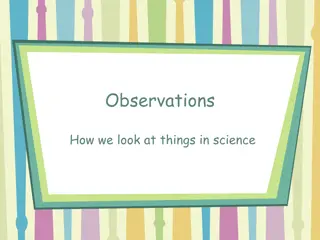Understanding Flashlights and Electric Circuits: Basics and Observations
This informative content covers the basics of electric circuits, Ohm's law, and how flashlights work. It delves into concepts like voltage, current, resistance, and the components necessary for a functioning circuit. Additionally, it discusses observations related to flashlights and electrical circuits, such as the impact of battery orientation and dimming as batteries age.
Download Presentation

Please find below an Image/Link to download the presentation.
The content on the website is provided AS IS for your information and personal use only. It may not be sold, licensed, or shared on other websites without obtaining consent from the author. Download presentation by click this link. If you encounter any issues during the download, it is possible that the publisher has removed the file from their server.
E N D
Presentation Transcript
Chapter 10.3 Announcements: Homework 10.3: due Tuesday, April 16, in class Exercises: 30, 32, 33, 38, 40, 42 Problems: 19, 23, 24, 25, 26, 28, 29, 30 - Remember: Homework 9.2 is due Thursday, April 11, in class - All grades will continue to be posted at: http://www.wfu.edu/~gutholdm/Physics110/phy110.htm - Listed by last four digits of student ID We ll now cover only parts of each chapter (let me know if you want me to cover something that is not on the list and that interests you): - 5.1 Balloons - 7.1 Woodstoves - 9.1 Clocks - 9.2 Musical Instruments - 10.3 Flashlights - 11. Household Magnets & Electric Motor - 11.2 Electric Power Distribution - 15.1. Optics, cameras, lenses - 16.1 Nuclear Weapons
Chapter 10.3 Flashlights Electric circuits, Ohm s law Concepts Demos and Objects - How does a flashlight work - building an electric circuit - electric circuits - current - voltage - voltage rises and drops - resistance - Ohm s law; V = R I - electrons - charge - electric power, P = V I
Observations About Flashlights (and electrical circuits) They turn on and off with a switch More batteries usually means brighter The orientation of multiple batteries matters Flashlights dim as batteries age
For a functioning circuit we need: battery, switch, light bulb, wire.
In a flashlight we are creating an: Electrical circuit An electrical current (electrons) runs through all the parts of the circuit (close circuit). No current flows when switch is open (open circuit). Electrons carry energy from batteries to the bulb. Short circuit: A path (short cut) in which the light bulb is cut out.
i-clicker-1 If you remove the 2 batteries from a working flashlight (shown below) and reinstall them backward so that they make good contact inside, will the flashlight still work? A.Yes B.No
A Battery Battery pumps charge from + end to end Chemical potential energy is consumed Electrostatic potential energy is produced Current undergoes a rise in voltage Alkaline cell: 1.5 volt rise Lead-acid cell: 2.0 volt rise Lithium cell: 3.0 volt rise Chain of cells produces larger voltage rise
A Light Bulb Structure Contains a protected tungsten filament Filament conducts electricity, but poorly Filament barely lets charge flow through it Electrostatic potential energy (voltage) is consumed Thermal energy is produced Current undergoes a drop in voltage Two-cell alkaline flashlight: 3.0 volt drop
How to connect a battery What s wrong with each of the schemes shown in the Figure for lighting a flashlight with a flashlight battery and a single wire? (a) There is no loop for the current to flow around. (b) There is loop to and from the light bulb, but there is no potential difference. - - - (a) (b) (c) (c) Nothing wrong here. The bulb will light up.
Electric Current Water Analogy h V water flow I Current: number of electrons passing through per second Water analogy: number of water molecules passing through per second
What determines the current through the circuit (Load)? Ohm s Law V = I R or I = V/R R I V V Voltage; units, Volt, 1V I Current; units, Ampere, 1A R Resistance; units, Ohm, 1 So, 10V across a 100ohm load = 0.1 Amp Where 1 Amp = 1 coulomb/sec = 6.25 x 1018 e/sec 1 Amp=62,500,000,000,000,000,000 electrons/sec
Ohms Law V = I R File:Volta A.jpg File:Ampere Andre 1825.jpg http://upload.wikimedia.org/wikipedia/commons/d/dc/Ohm3.gif Count Alessandro Giuseppe Antonio Anastasio Volta (1745 1827) was an Italian physicist known especially for the development of the first electric cell in 1800. Andr -Marie Amp re (1775 1836) was a French physicist and mathematician who is generally regarded as one of the main discoverers of electromagnetism. Georg Simon Ohm (1789 1854) was a German physicist. As a high school teacher, Ohm began his research with the recently invented electrochemical cell, invented by Italian Count Alessandro Volta. Discovered the relationship, V = I R, Ohm's law.
i-clicker-2; -3 1. A battery can produce 1.5 V. When connected to a light bulb a current of 2 A (Ampere) runs through the bulb. What is the resistance of the bulb? 2. A bulb in a lamp that is connected to a household outlet has a resistance of 100 What current flows through it? 3. Your skin has a resistance of about 106 to 104 (dry) and 103 (wet) . What current runs through you when you stick your finger into an outlet (conduction to ground)? 1A. 0.5 1B. 0.75 C 5 1D. 2.0 1E. 3.0 2A. 1.2 A 2B. 2.4 A C 2D. 4.8 A 2E. 5.0 A
Electric shock The severity of an electric shock depends on the magnitude of the current, how long it acts and through what part of the body it passes. Can feel ~ 1 mA; pain at a few mA; severe contractions above 10 mA; heart muscle irregularities above 70 mA. Resistance of dry skin ~ 104 to 106 wet skin 103 or less. A person in good contact with ground who touches a 120 V line 120 V = = 120 with wet hands can suffer a current I mA 1000
A word about the sign convention. Positive Charge Current points in the direction of positive flow Flow is really negative charges (electrons) It s hard to distinguish between: negative charge flowing to the right positive charge flowing to the left We pretend that current is flow of + charges It s really charges flowing the other way
Power Power is energy per unit of time Power is measured in joules/second or watts Batteries are power sources Loads are power consumers
Battery Power power produced by the battery Current: units of charge pumped per second Voltage rise: energy given per unit of charge current voltage rise = power produced P = Vrise I Vrise I
Load Power Current is units of charge passed per second Voltage drop: energy taken per unit of charge current voltage drop = power received Vdrop P = Vdrop I I
i-clicker-4 A bulb in a lamp that is connected to a household outlet has a resistance of 100 How much power does it consume? (Note: Look at previous i-clicker) A. 120 J B. 120 W C J D. 144 W E. 100 J A Kilowatt-hour costs 10 cents. If you run 10 lamps for 10 hours, how much does that cost you?
